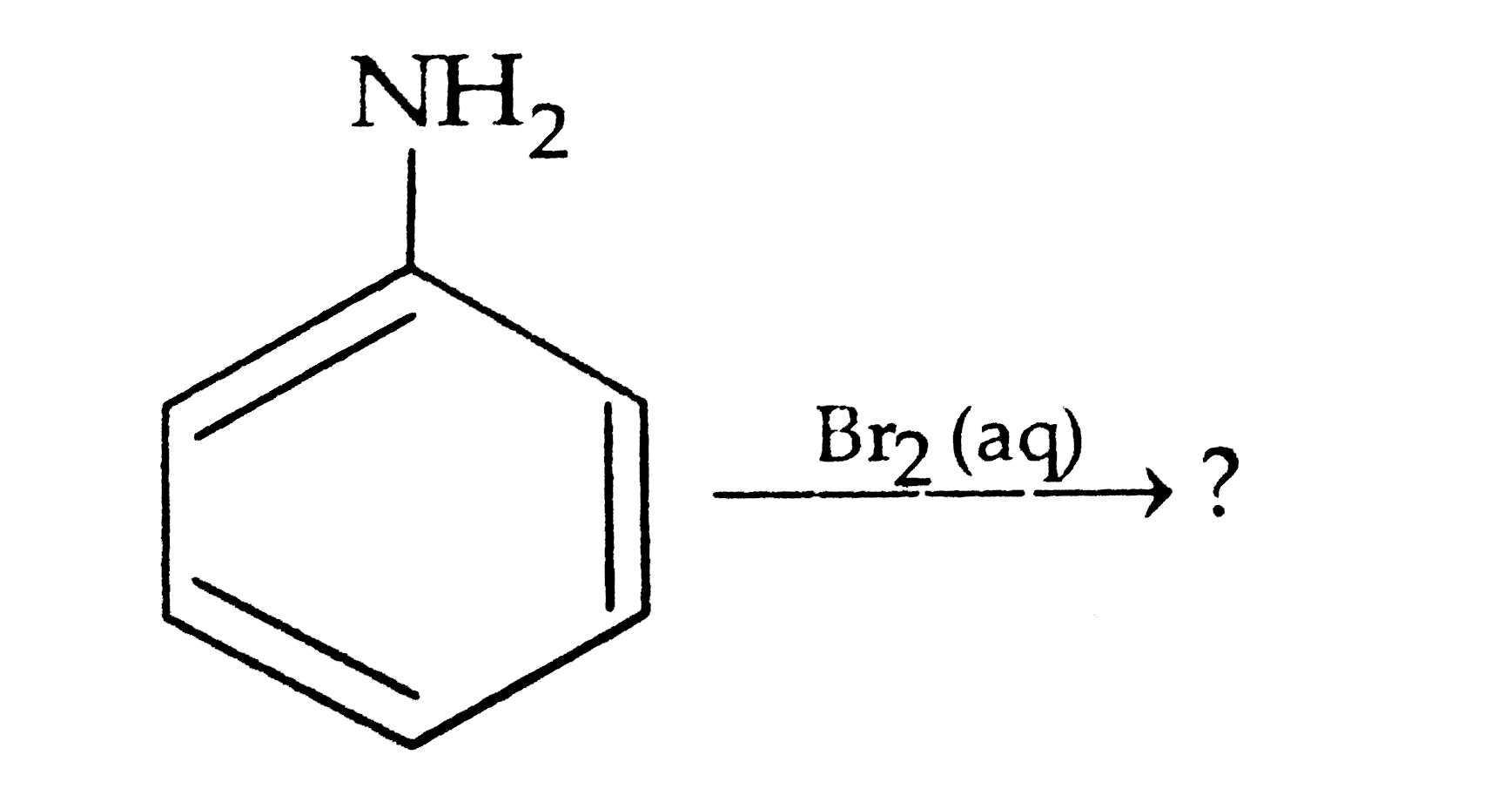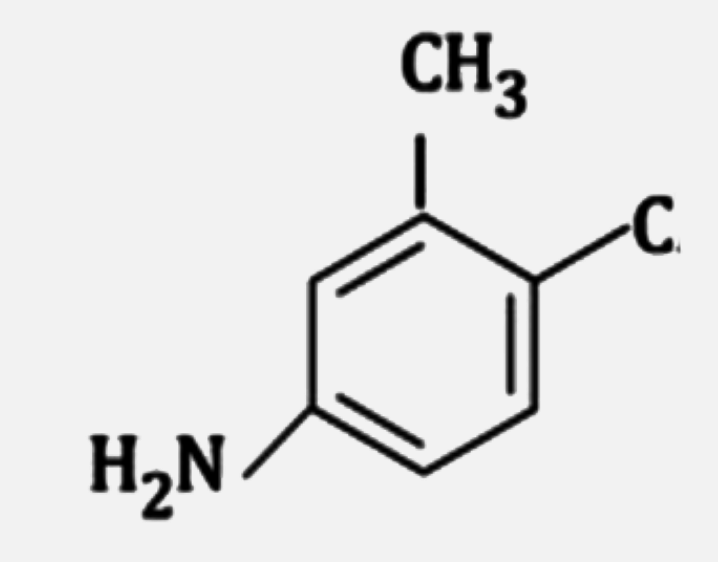Identify B, X and R respectively in the following sequence of reactions
C2H5MgBrClCN−−−→AH3O+−−−→B,
CH3COCH3I2−−−→NaOHXAg−−→Y
C6H5NH2NaNO2−−−−→HClPCuCN−−−→Q+4H−−→R
C2H5COOH,CHI3,C6H5CH2NH2
C2H5COOH,CH3I,C6H5COOH
C2H5CH2NH2,CH3I,C6H5COOH
C2H5COOH,C2H5I,C6H5CONH2C2H5COOH,C2H5I,C6H5CONH2
The correct Answer is:A
To identify the compounds B, X, and R in the given sequence of reactions, let's analyze each step carefully.
Step 1: Identify Compound A
The first reaction involves ethyl magnesium bromide (C2H5MgBr) reacting with acetonitrile (ClCN). This reaction is a Grignard reaction leading to the formation of a nitrile.
- Reaction:
C2H5MgBr+ClCN→C2H5CN(A)
- Product A: Ethyl cyanide (C2H5CN)
Step 2: Identify Compound B
The next step involves the hydrolysis of compound A (C2H5CN) using acid (H3O+). This reaction converts the nitrile into a carboxylic acid.
- Reaction:
C2H5CN+H3O+→C2H5COOH(B)
- Product B: Ethanoic acid (C2H5COOH)
Step 3: Identify Compound X
The next reaction involves acetone (CH3COCH3) undergoing a haloform reaction in the presence of iodine (I2) and sodium hydroxide (NaOH). This reaction produces methyl iodide (CH3I).
- Reaction:
CH3COCH3+I2+NaOH→CH3I(X)
- Product X: Methyl iodide (CH3I)
Step 4: Identify Compound Y
The reaction of methyl iodide (X) with silver (Ag) leads to the formation of acetylene (C2H2).
- Reaction:
CH3I+6Ag→C2H2(Y)
- Product Y: Acetylene (C2H2)
Step 5: Identify Compound P
The next reaction involves aniline (C6H5NH2) reacting with sodium nitrite (NaNO2) in hydrochloric acid (HCl) to form benzene diazonium chloride (C6H5N2Cl).
- Reaction:
C6H5NH2+NaNO2+HCl→C6H5N2Cl(P)
- Product P: Benzene diazonium chloride (C6H5N2Cl)
Step 6: Identify Compound Q
The diazonium salt (P) reacts with copper cyanide (CuCN) to form phenyl cyanide (C6H5CN).
- Reaction:
C6H5N2Cl+CuCN→C6H5CN(Q)
- Product Q: Phenyl cyanide (C6H5CN)
Step 7: Identify Compound R
Finally, the reaction of phenyl cyanide (Q) with hydrogen (H2) in the presence of a catalyst (4H) leads to the formation of benzylamine (C6H5CH2NH2).
- Reaction:
C6H5CN+4H→C6H5CH2NH2(R)
- Product R: Benzylamine (C6H5CH2NH2)
Summary of Identifications
- B: Ethanoic acid (C2H5COOH)
- X: Methyl iodide (CH3I)
- R: Benzylamine (C6H5CH2NH2)
The first reaction involves ethyl magnesium bromide (C2H5MgBr) reacting with acetonitrile (ClCN). This reaction is a Grignard reaction leading to the formation of a nitrile.
C2H5MgBr+ClCN→C2H5CN(A)
- Product A: Ethyl cyanide (C2H5CN)
The next step involves the hydrolysis of compound A (C2H5CN) using acid (H3O+). This reaction converts the nitrile into a carboxylic acid.
C2H5CN+H3O+→C2H5COOH(B)
- Product B: Ethanoic acid (C2H5COOH)
The next reaction involves acetone (CH3COCH3) undergoing a haloform reaction in the presence of iodine (I2) and sodium hydroxide (NaOH). This reaction produces methyl iodide (CH3I).
CH3COCH3+I2+NaOH→CH3I(X)
- Product X: Methyl iodide (CH3I)
The reaction of methyl iodide (X) with silver (Ag) leads to the formation of acetylene (C2H2).
CH3I+6Ag→C2H2(Y)
- Product Y: Acetylene (C2H2)
The next reaction involves aniline (C6H5NH2) reacting with sodium nitrite (NaNO2) in hydrochloric acid (HCl) to form benzene diazonium chloride (C6H5N2Cl).
C6H5NH2+NaNO2+HCl→C6H5N2Cl(P)
- Product P: Benzene diazonium chloride (C6H5N2Cl)
The diazonium salt (P) reacts with copper cyanide (CuCN) to form phenyl cyanide (C6H5CN).
C6H5N2Cl+CuCN→C6H5CN(Q)
- Product Q: Phenyl cyanide (C6H5CN)
Finally, the reaction of phenyl cyanide (Q) with hydrogen (H2) in the presence of a catalyst (4H) leads to the formation of benzylamine (C6H5CH2NH2).
C6H5CN+4H→C6H5CH2NH2(R)
- Product R: Benzylamine (C6H5CH2NH2)
- B: Ethanoic acid (C2H5COOH)
- X: Methyl iodide (CH3I)
- R: Benzylamine (C6H5CH2NH2)
Topper's Solved these Questions
- ALKENE, ALKANE & ALKYNE BOOK - ALLENCHAPTER - ALKENE, ALKANE & ALKYNE EXERCISE - EXERCISE-2
103 Videos
- ALKENE, ALKANE & ALKYNE BOOK - ALLENCHAPTER - ALKENE, ALKANE & ALKYNE EXERCISE - EXERCISE-3
99 Videos
- ALKENE, ALKANE & ALKYNE BOOK - ALLENCHAPTER - ALKENE, ALKANE & ALKYNE EXERCISE - EXCERSISE-3
28 Videos
- AIIMS 2019BOOK - ALLENCHAPTER - AIIMS 2019EXERCISE - CHEMISTRY
40 Videos
- ALKYL AND ARYL HALIDEBOOK - ALLENCHAPTER - ALKYL AND ARYL HALIDEEXERCISE - EXERCISE-05 (B)
35 Videos
Similar Questions
Knowledge Check
H3C−CH3∣C∣CH3−H+CCl4R2O2−−→hvProduct :
AH3C−CH3∣C∣CH3−ClBCHCl3CBoth (a) and (b)DNone of these
Consider the following sequence of reactions
C2H5C≡CHCH3MgBr−−−−−→A(1)HCHO−−−−−−→(2)H2O+B
The product (B) is
View SolutionIdentify Z in the sequence of reactions :
CH3CH2CH=CH2HBr−−→H2O2YC2H5ONa−−−−−→Z
View SolutionWrite major product in the following reactions :
C6H5−CH=CH2+B2H6H2O2−−−→NaOH
View SolutionWrite structures of compounds A,B and C in each of the following reactions:
(i) C6H5BrMg/dry ether−−−−−−−→A(a)CO2(g)−−−−−−−→(b)H3O+BPCl5−−→C
(ii) CH3CN(a)SnCl2/HCl−−−−−−−−−→(b)H3O+Adil.NaOH−−−−−→BΔ−−→C
View SolutionThe product B of the following sequence of reactions is
C6H5CONH2Br2−−−→NaOHANaNO2/HCl−−−−−−−−−→ 0−5∘C –––––––––––––––––––B
View SolutionWrite the main products of the following reactions:
(i) C6H5N+2Cl−H3PO2+H2O−−−−−−−−→?
(ii)
(iii) CH3−C∣∣O−NH2Br2+NaOH−−−−−−−→?
View SolutionWrite the main products of the following reactions:
(i) C6H5N+2Cl−H3PO2+H2O−−−−−−−−→?

(iii) CH3−C∣∣O−NH2Br2+NaOH−−−−−−−→?
View Solution

